Did you know the average house cat weighs between 8 and 10 pounds? But quite a few cat breeds grow much larger than that.
If you’ve ever picked up your cat and thought, “Wow, you’re getting heavy!” wait until you read about these giant cat breeds!
1. Maine Coon Cat – The Largest Cat Breed
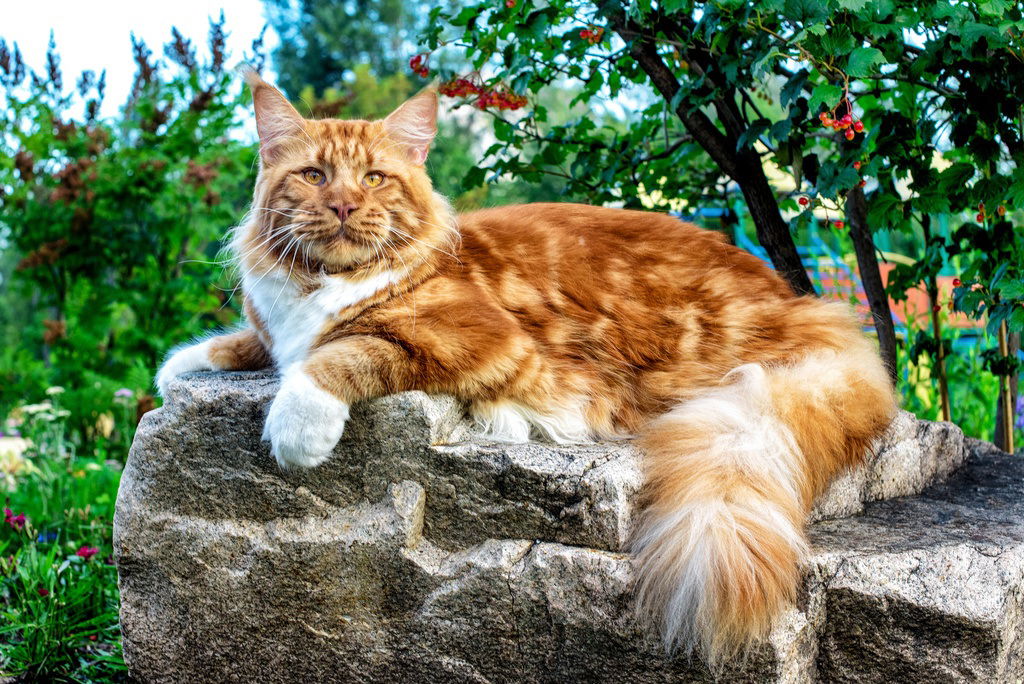
| Weight | Length | Height | |
| Males | 15-27 lbs. | 34 in. (avg) | 10-16 in. |
| Females | 10-18 lbs. | 34 in. (avg) | 8-14 in. |
The Maine Coon is the biggest domestic cat breed.
It is also one of the most popular breeds in the US. But not just because of its size.
This big cat has a sweet and gentle charm that endears it to everyone it meets. They’re known for being affectionate and people-oriented.
The official state cat of Maine, the Maine Coon is a naturally occurring breed, meaning it evolved and was not created by human cross-breeding.
Stewie – The World’s Longest Cat Ever
One very special Maine Coon named Stewie weighed 33 pounds and was 48-1/2 inches long! He is in the Guinness Book of World Records as the longest domestic cat in the world. Stewie was a gentle giant and certified therapy cat before his passing in 2013.
Barivel – The World’s Longest Cat Currently
The current record holder is Barivel, a Maine Coon from Italy who measures in at over 47 inches. He is beautiful and shy with a love of fish (tuna) and chicken.
Cygnus Regulus Powers – The Longest Cat Tail
Another Maine Coon holds the record for the longest tail. He is a silver Maine Coon cat named Cygnus Regulus Powers. His winning tail was 17.58 inches long.
Read more about the Maine Coon Cat.
2. Chausie – The Cat for Dog Lovers
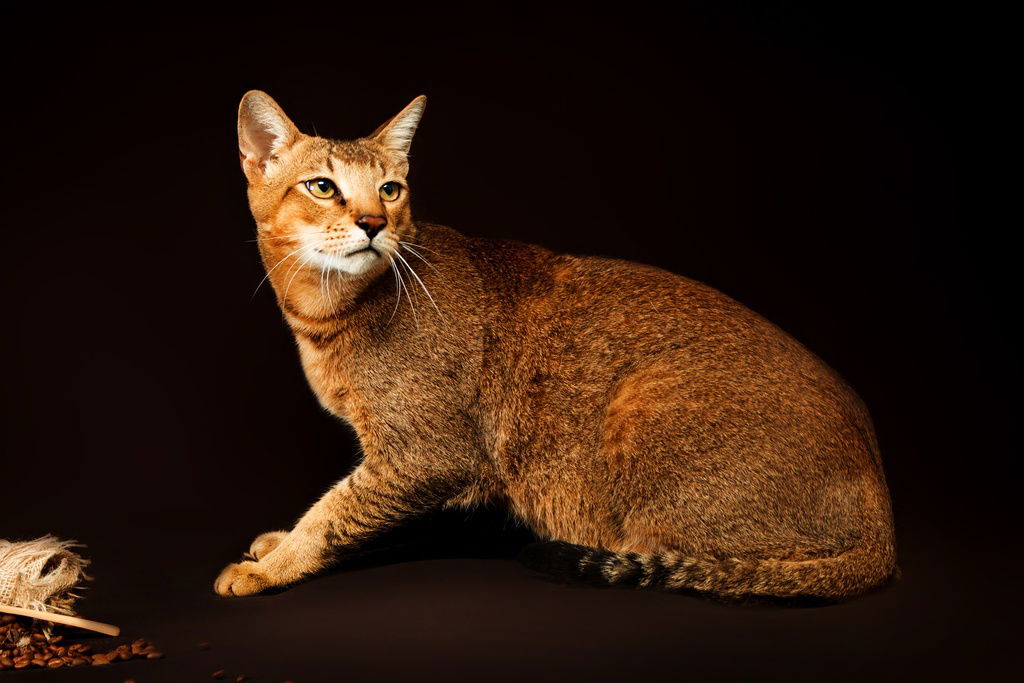
| Weight | Length | Height | |
| Males | 12-25 lbs. | 28 in. (avg) | 14-18 in. |
| Females | 10-18 lbs. | 28 in. (avg) | 12-16 in. |
The Chausie may have an unfair advantage in the large cat breed contest. This breed is a hybrid, a cross between a domestic housecat and a small wildcat, the Jungle Cat (Felis chaus) of Southeast Asia.
The Egyptians first domesticated the Jungle Cats. At first, they probably bred spontaneously with domestic cats. But in the 1960s, people began selective breeding for Chausies using several breeds, including the Abyssinian.
Today, most Chausies have two domestic parents, but the Chausie is still one of the biggest cat breeds. They can take up to three years to reach their full growth.
Chausies have long legs and a long body, but they typically have short tails. This adds to their uniquely wild appearance. The tails on some individuals even look bobbed.
This breed has a higher energy level than most cats. As such, Chausies need a lot of attention and exercise. They enjoy walks with a harness and leash and love to play in the water.
Chausie owners appreciate this breed’s intelligence and dog-like behaviors. These loveable felines typically form intense bonds with their owners and are loyal and affectionate.
So, if you can only have one pet but can’t choose between a cat and a dog, the Chausie may be the perfect pet for you!
Read more about the Chausie.
3. Savannah – Wildcat or Housecat?

| Weight | Length | Height | |
| Males | 10-25 lbs. | 16 in. (avg) | 14-17 in. |
| Females | 10-16 lbs. | 15 in. (avg) | 10-13 in. |
The Savannah is another large hybrid cat. It’s a cross of a Serval (an African wildcat) and a domestic cat. That first domestic cat was probably a Siamese, but other breeds have been used to build the breed since then.
Savannah’s have an ‘F’ designation (for filial) to describe the number of generations a particular Savannah cat is removed from its Serval wildcat roots. As such, F1’s (1 generation removed) are typically bigger than F2’s which are bigger than F3’s.
Breeders will tell you that they look 10 pounds heavier than they actually are. These cats get smaller in size from generation to generation, so their length varies.
A female Savannah named Scarlett’s Magic holds the Guinness world record for tallest domestic cat at 17.1 inches at the shoulder. That’s the size of a medium-sized dog!
And she’s beautiful as well. This gorgeous cat has a spotted pattern and resembles a cheetah.
Her temperament is equally striking. She’s loyal, outgoing, and affectionate. But because she’s highly intelligent, she gets bored easily. When she does, she can get into trouble, so much so that owners and breeders have coined a word for the results—savandalism.
This cat needs a family that has time to give her plenty of attention and interaction.
For more information about the Savannah, visit the Savannah Cat Association.
4. Norwegian Forest Cat – The Norwegian Treasure
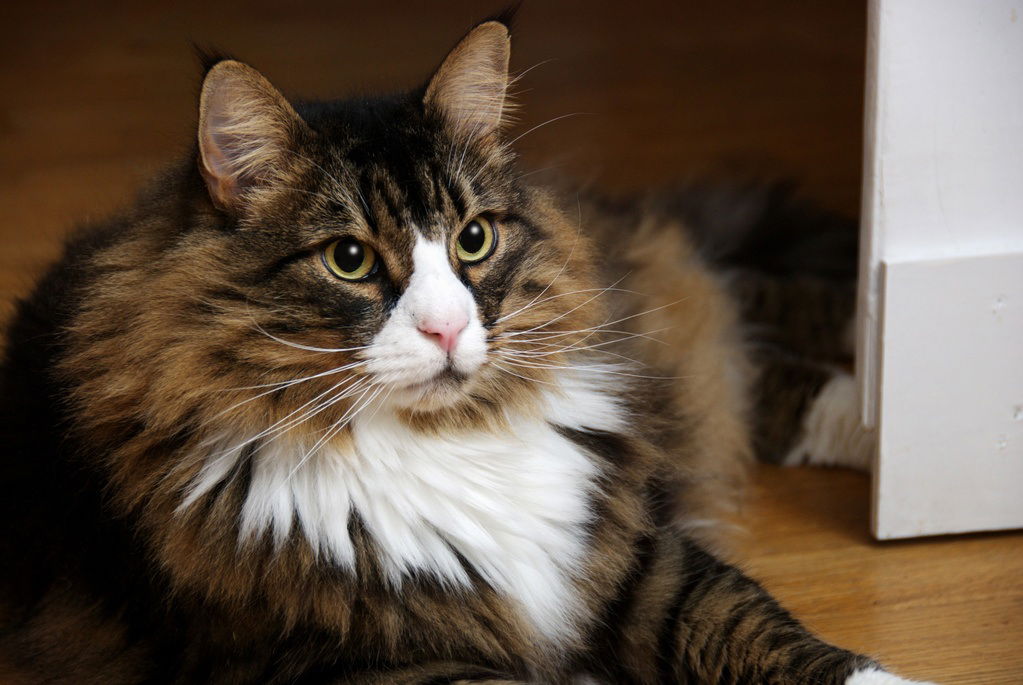
| Weight | Length | Height | |
| Males | 13-22 lbs. | 44 in. (avg) | 12-17 in. |
| Females | 8-17 lbs. | 41 in. (avg) | 10-15 in. |
The Norwegian Forest cat (or “Wegie”) is a very large breed that’s the pride of Norway. It’s called the Norsk Stogkatt in its homeland. These cats are said to have traveled with the Vikings to keep their ships free of rodents. They were also champion rodent hunters in the barns of the countryside.
The breed has adapted well to the cold climate of Norway with a thick, semi-long coat, a dense undercoat, and a neck ruff that grows thicker in the winter. Like the Siberian, they have a delicate face on a rugged, muscular body. They can be almost any color or pattern. Like other cats on this list, the Norwegian is a slow grower, taking five years to reach maturity.
Their faces are triangular, and their eyes are unusual. They’re almond-shaped and set obliquely in the face, giving them a slightly exotic look.
At home, the Norwegian is social and intelligent. They can be lap cats, but only when it suits them. However, they like to be with their humans and are content to be indoor cats. They’re playful, loving, and interactive and make great pets overall.
To learn more about the Norwegian Forest Cat, visit CFA.org.
5. Siberian – The “Watch Cat”
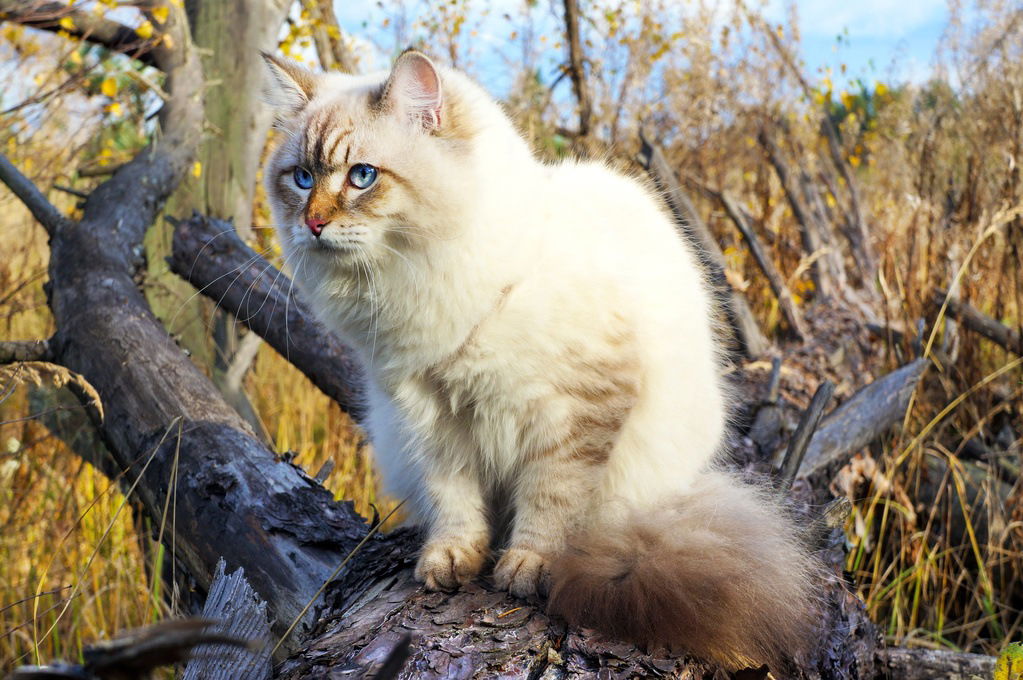
| Weight | Length | Height | |
| Males | 13-22 lbs. | 21 in. (avg) | 9-13 in. |
| Females | 9-15 lbs. | 16.5 in. (avg) | 7-11 in. |
The Siberian is a rugged but fluffy cat. It is a very old Russian breed, going back to the 1500s in Siberia. They are well suited to life in that cold climate, with a medium-length, thick triple coat.
These cats were once used as monastery cats, where they were kept to catch rodents. The monks also used them as “watch cats,” and they did this job as well as a watchdog would.
Store owners also kept Siberian cats to control rodents. Today’s Siberians still have these hunting skills and can even take down rabbits.
Although this breed of cat is a very old one, it’s only been known in the US since the 1990s. The Siberian is becoming popular here because of its loyal and affectionate nature. It’s a surprisingly lovely cat also, with a sweet, delicate face on a rugged and muscular body.
Siberians also love to be near their people. They’re playful and athletic and have a high need for interaction and exercise. They need families willing to spend a lot of time with them.
Read more about the Siberian at Siberian Cat World.
6. Ragdoll – The Expert “Chillaxer”
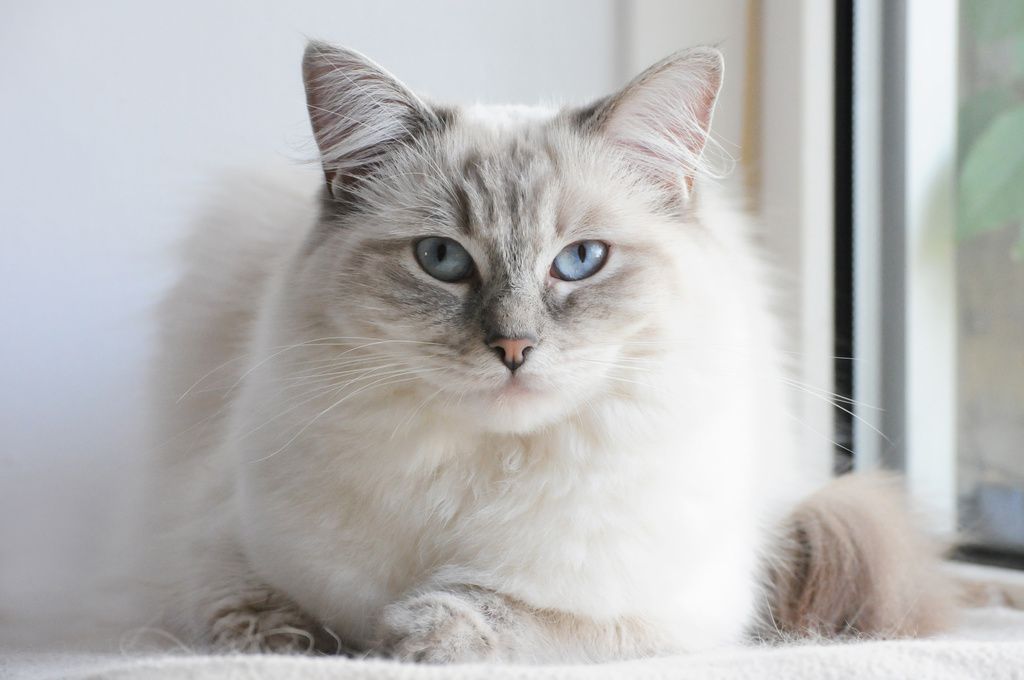
| Weight | Length | Height | |
| Males | 12-20 lbs. | 18 in. (avg) | 12-14 in. |
| Females | 9-15 lbs. | 15 in. (avg) | 8-12 in. |
This semi-long-haired cat, originally from California, has only been around since the 1960s.
Ragdolls are super-sized and stunning. They don’t reach full maturity for up to four years, which helps to explain how they grow so large.
The Ragdoll is known for her lovely silky coat that feels like a rabbit’s and a full ruff around her neck. She also has vivid blue eyes. Her coat can be one of several light colors with darker colored markings.
The Ragdoll is a loving and affectionate cat that enjoys children as well as adults. But her most distinctive trait is the behavior of going limp in the arms of a person cuddling with her, perfectly relaxed and content. She may be a bit big for a lap cat, but don’t tell her that!
Ragdolls love attention and are sometimes referred to as “puppy cats” because they tend to follow their owners around. They can be trained to come when called and to play fetch. They are quite playful.
Check out our in-depth post about the Ragdoll to learn more.
7. RagaMuffin – The Street Urchin
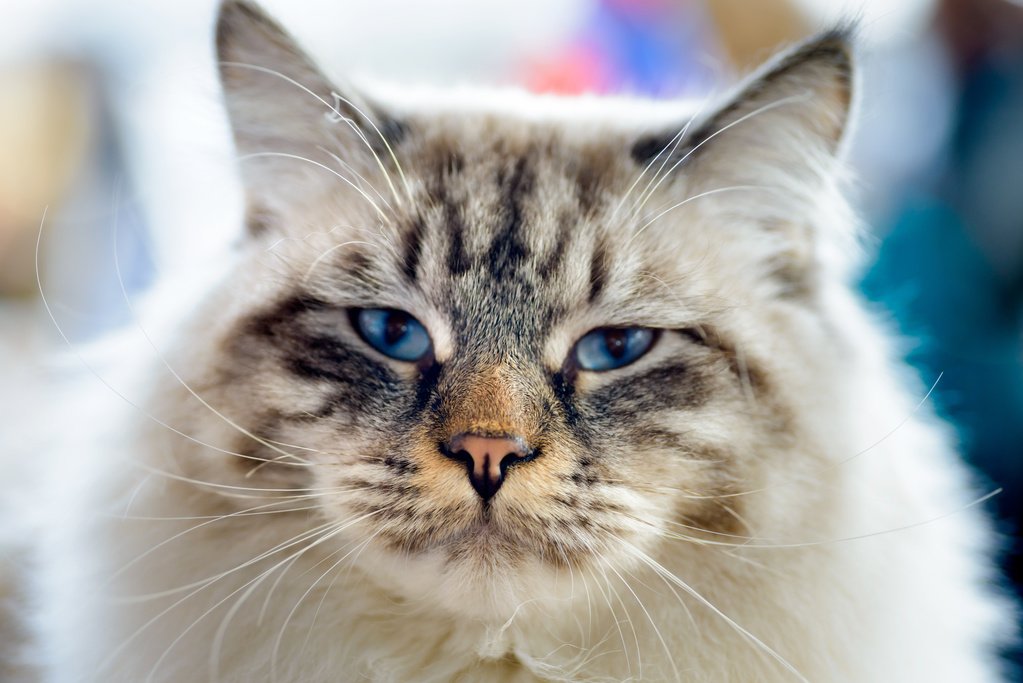
| Weight | Length | Height | |
| Males | 12-20 lbs. | 16 in. (avg) | 10-14 in. |
| Females | 9-15 lbs. | 14 in. (avg) | 8-12 in. |
The RagaMuffin was bred from the Ragdoll and is sometimes called the “street urchin” because of its humble beginnings.
But their size is only one of the things that stands out about this breed. The RagaMuffin forms intense bonds with its owner and has a calm disposition known for its “extreme sweetness,” according to the Cat Fanciers Association (CFA).
Like their relative the Ragdoll, these cats have medium-long silky coats and a full ruff around their necks. Their coats have more variety in color than the Ragdoll; they can be almost any color pattern. They can also have the Ragdoll trait of going limp in your arms in complete relaxation.
RagaMuffins are gentle-natured cuddle bugs and great with children and other pets. They make wonderful cats for people who live alone because they love to curl up in laps and keep their owners’ company.
Read more about the RagaMuffin at RagaMuffin Associated Group.
8. Turkish Van – The Swimming Cat
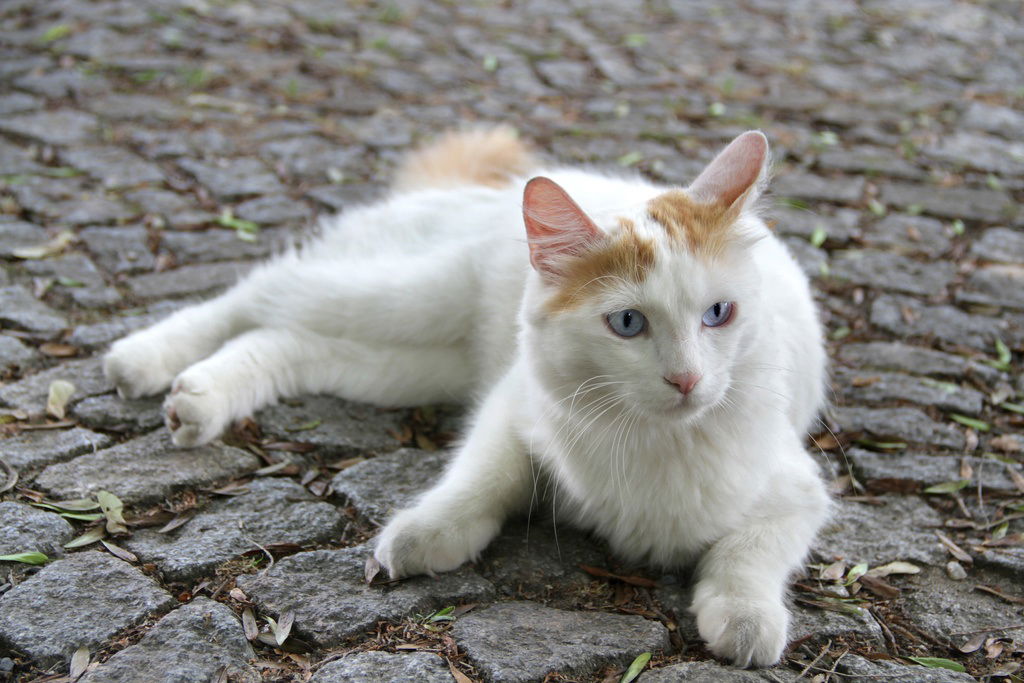
| Weight | Length | Height | |
| Males | 9-16 lbs. | 34 in. (avg) | 14-17 in. |
| Females | 9-15 lbs. | 33 in. (avg) | 13-16 in. |
Like the Maine Coon, the Turkish Van is a naturally occurring breed. It’s an ancient breed from central and southwest Asia.
The Van is rare even in its homeland of Turkey. It wasn’t known in the US until 1982.
The Turkish Van is another beautiful cat, with medium-long silky hair that feels like cashmere. It has a unique color pattern, too. They are usually pure white with color only on their tails and their heads.
Their eyes are usually either amber or blue, but it’s not uncommon for the Turkish Van to have eyes of two different colors.
In the world of cat breeds, the Turkish Van is unusual for another reason. It was named after Lake Van in its home country of Turkey because this cat loves to swim. It has a long muscular body that’s built for swimming, and its coat is waterproof.
Turkish Vans are very active, playful cats. They love to run and climb as much as they enjoy swimming. When they do sit still, though, they’re affectionate and happy to be near their people.
They don’t care for lap sitting much, but they’re affectionate and will follow their humans around the house. They’ve even been known to follow their owners into the shower!
Learn more about the Turkish Van at Turkish Van Cat Club.
9. British Shorthair – The Cheshire Cat
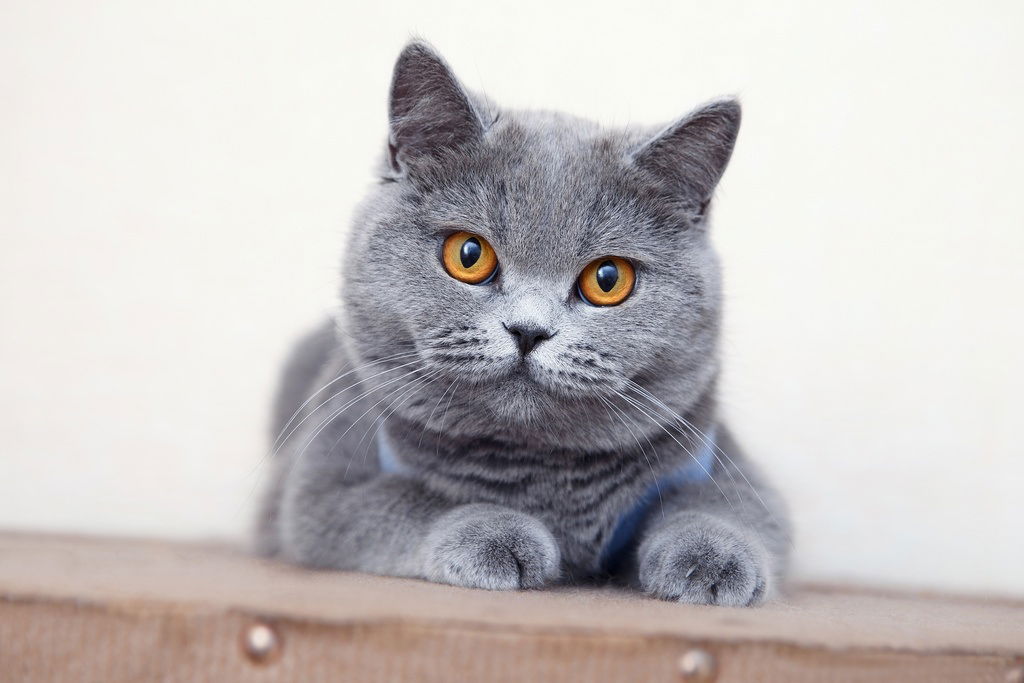
| Weight | Length | Height | |
| Males | 9-16 lbs. | 23 in. (avg) | 12-14 in. |
| Females | 7-12 lbs. | 18 in. (avg) | 9-13 in. |
If this cat looks familiar to you, it should. It’s the smiling face of Alice in Wonderland’s Cheshire Cat! And that smiling face sums up his temperament nicely. This guy has a sweet disposition and is a great choice for a loyal family pet.
The British Shorthair is also dignified. (Some call him the Winston Churchill of the cat world.) He is one of the oldest breeds of English cats. This breed is believed to have been brought to England by the ancient Romans.
This cat has a luxuriously plush coat that comes in many colors, but blue is the most popular. They are compact but powerfully built. His coat makes him look even larger than he is.
The British Shorthair was once kept as a barn hunter, but now he prefers a quieter life as a pampered pet.
To learn more about the British Shorthair, visit the British Shorthair Cat Club.
10. American Bobtail – The Cat That Wags Its Tail
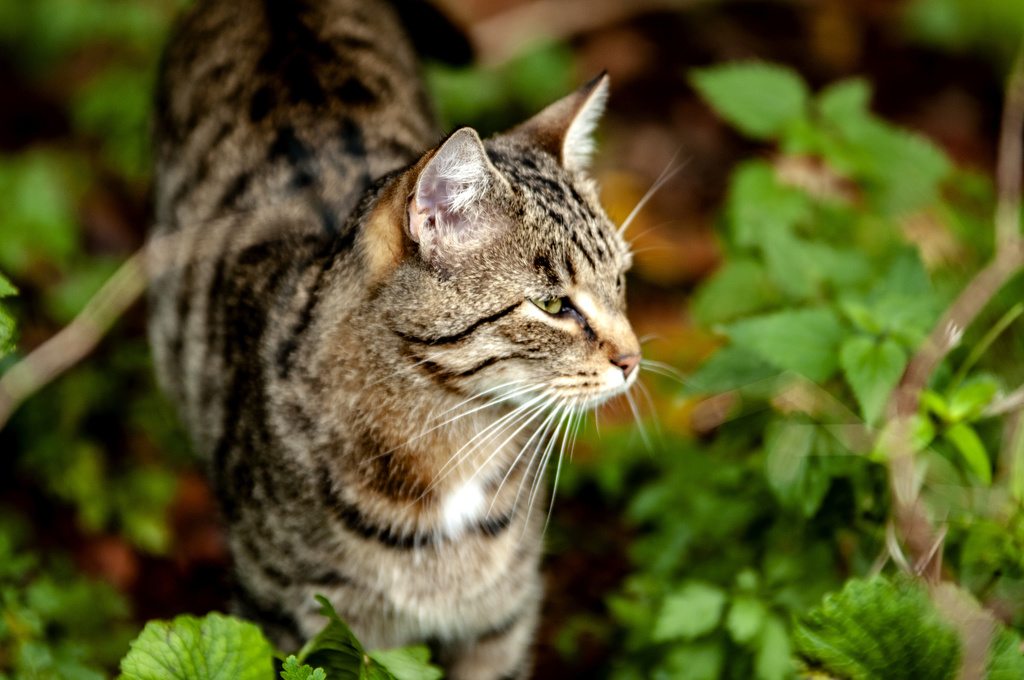
| Weight | Length | Height | |
| Males | 9-16 lbs. | 20 in. (avg) | 9-11 in. |
| Females | 8–11 lbs. | 17 in. (avg) | 8-9 in. |
The American Bobtail is a muscular and athletic breed, native to North America, who looks like a bobtailed wildcat. As the name implies, he has a short, bobbed tail. Like a dog, this cat will wag his tail according to his mood.
He can have one of two coats: a medium-length coat or a short-haired, plush coat. Both feel like rabbit fur. They come in any color and pattern.
The Bobtail is a very intelligent breed. These cats bond intensely with their human families. This is an affectionate and loving cat that gets along well with adults and children alike.
Bobtails love to play and to catch flying insects out of midair. They are quite talkative and love to go for walks.
Read more about the American Bobtail at The American Cat Fanciers Association.
How We Ranked the Largest Cat Breeds
There are many ways we could have done this. After all, some cats are heavier, others longer, some taller, and others stockier.
Certain breeds have longer legs or a bigger bone structure. Other breeds have long bodies but short tails.
Some breeds are long-haired, giving them a larger appearance than short-haired breeds.
Adding to the mix, male cats are almost always (on average) bigger than their female counterparts.
Finally, exceptional cats within each breed are far larger than the norms for that breed.
So, with all this variability, how did we rank the largest cat breeds?
Our Largest Cat Breed Criteria
We decided to take a simple approach to our ranking. We started with the standard sizes (weight, length, height) for adult male and female cats within a breed.
We then chose to use weight as the primary sizing factor. When weight alone wasn’t enough to decide between two or more breeds, we looked at length (with tail). And if we still couldn’t determine, we used height as the tie-breaker.
Bigger Can Be Better
So, there you have it—the largest domestic cat breeds in the world. These cats have something other than size in common, though. They all have striking appearances with personalities to match, and they are all loyal and affectionate companions.
All of which goes to show that big definitely is beautiful!
For still more information about any of the breeds in this article, visit The International Cat Association (TICA) or the Cat Fanciers Association (CFA).

